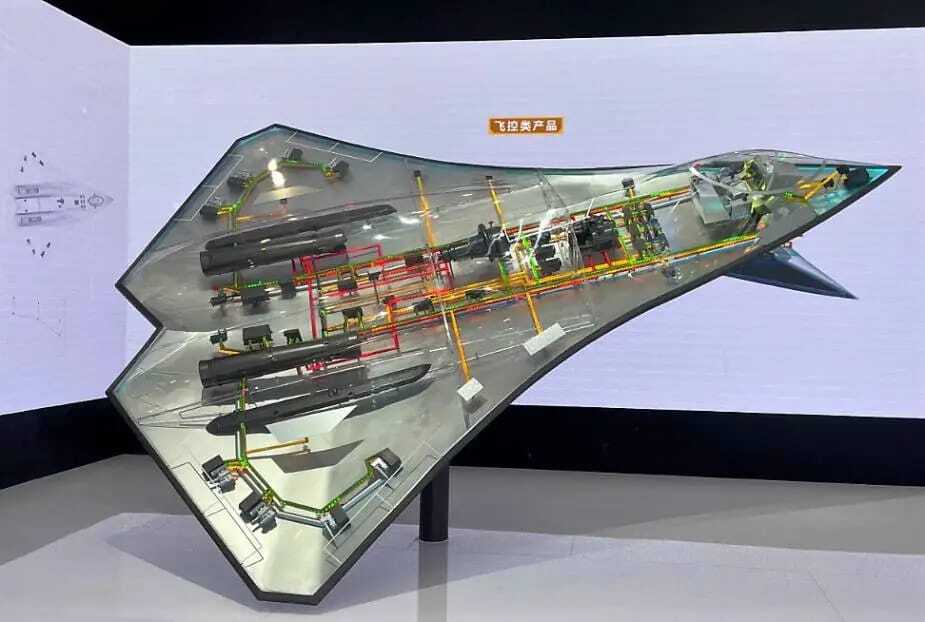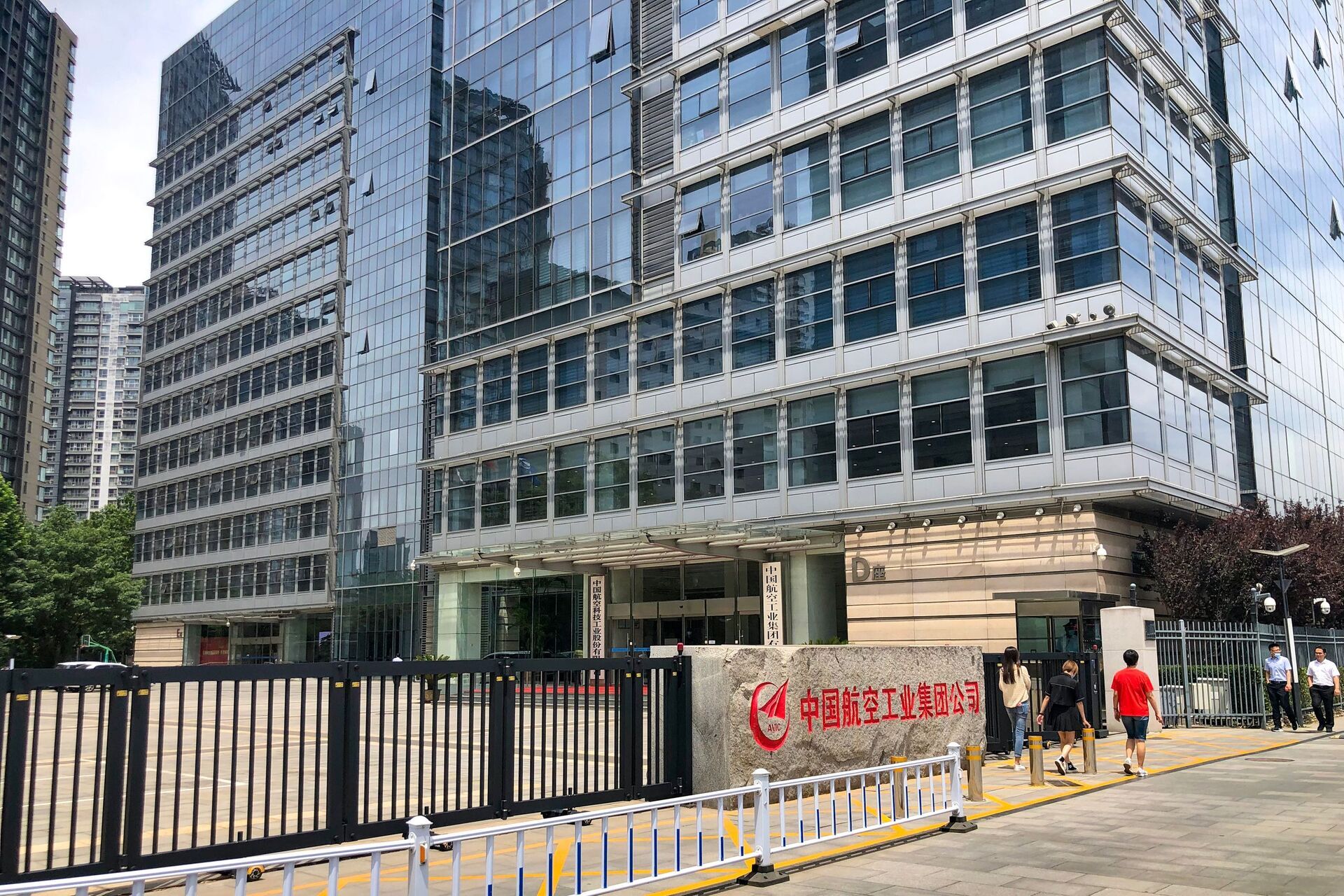- AviationOutlook
- Posts
- AVIC (Aviation Industry Corporation of China) - SWOT Analysis
AVIC (Aviation Industry Corporation of China) - SWOT Analysis
The Aviation Industry Corporation of China (AVIC) stands as a formidable force in the global aerospace and defense industry.
As China’s largest aviation enterprise and the world’s second-largest defense company by overall revenues, AVIC’s strategic position in aviation, aerospace, and defense segments continues to shape the future of both commercial and military aviation.
This comprehensive analysis examines AVIC’s strengths, weaknesses, opportunities, and threats as the company advances toward 2026 and beyond.
Table of Contents
Understanding AVIC: A Powerhouse in Global Aerospace
Established in 1951, AVIC has evolved into a comprehensive aerospace and defense conglomerate that would be comparable to combining Lockheed Martin, Northrop Grumman, Sikorsky, and major portions of Boeing and Raytheon into a single corporation. The company’s impressive scale includes 386,000 employees, total assets valued at $185 billion, operating income of $77.8 billion, and annual net profits of $2.5 billion as of 2022.
AVIC’s operations span across multiple critical sectors, including military aircraft, commercial aviation, helicopters, unmanned aerial vehicles (UAVs), avionics, and general aviation. The company manages 33 scientific research institutes, nine national key laboratories, and hundreds of subsidiaries across China and more than 100 overseas entities, according to the Air University’s China Aerospace Studies Institute.
Strengths: Building on Formidable Capabilities
Government Support and Strategic Backing
AVIC operates as a state-owned enterprise directly overseen by the State-owned Assets Supervision and Administration Commission of the State Council. This unique position provides the company with substantial government backing, guaranteed funding for research and development, and strategic alignment with national priorities. The Chinese government’s commitment to developing a self-sufficient aerospace industry translates into consistent financial support and policy advantages that few private competitors can match.
Comprehensive Product Portfolio
AVIC produces essentially all of China’s domestic military aircraft, including the J-20 Mighty Dragon stealth fighter, which now numbers over 300 units in service as of late 2025. The company has also developed sixth-generation fighter concepts, demonstrating its commitment to maintaining technological leadership in military aviation.

Image source: wikipedia.org
In the commercial aviation sector, AVIC plays a crucial role in supporting COMAC’s C919 narrow-body aircraft program, which represents China’s direct challenge to Boeing’s 737 and Airbus’s A320 families. The C919 entered commercial service in 2023 and continues to expand its route network, with production targets set to reach 50 aircraft in 2025, according to Assembly Magazine.
International Partnerships and Collaboration
AVIC maintains extensive partnerships with global aviation leaders, including Boeing, Airbus, Bombardier, Safran, Rolls-Royce, Pratt & Whitney, GE, and Honeywell. These collaborations provide valuable technology transfer opportunities, manufacturing expertise, and international market access. In July 2025, Airbus expanded its partnership with AVIC Xi’an for A321 fuselage equipping operations, demonstrating continued Western confidence in AVIC’s manufacturing capabilities.
Advanced Research and Development Infrastructure
With 33 scientific research institutes, nine national key laboratories, and 30 aviation technology key laboratories, AVIC maintains one of the world’s most extensive aerospace R&D networks. This infrastructure enables rapid innovation cycles and supports the development of cutting-edge technologies across multiple domains, from advanced materials to artificial intelligence integration in aviation systems.
Vertical Integration and Manufacturing Scale
AVIC’s vertically integrated structure encompasses everything from raw material processing to final aircraft assembly, providing significant cost advantages and supply chain control. This integration allows the company to respond quickly to changing requirements and maintain quality control throughout the production process.

Image source: armyrecognition.com
Weaknesses: Confronting Critical Challenges
Technology Gap with Western Competitors
Despite significant progress, AVIC continues to face technology gaps compared to Western aerospace manufacturers, particularly in critical areas such as jet engine development, avionics systems, and advanced materials. The company still relies heavily on foreign suppliers for key components, including engines for the C919 aircraft, which uses CFM International LEAP engines, according to Airpower Asia.
Limited International Market Access
AVIC’s commercial aircraft face significant challenges in obtaining international certifications, particularly from the Federal Aviation Administration (FAA) and European Union Aviation Safety Agency (EASA). This limitation restricts the company’s ability to compete in lucrative international markets and confines most sales to domestic Chinese airlines or countries with close ties to China.
Quality Control and Safety Perception Issues
International concerns about quality standards and safety protocols in Chinese aerospace manufacturing persist. Building the reputation and trust necessary to compete with established Western manufacturers requires consistent demonstration of reliability over extended periods, which AVIC is still working to achieve.
Dependence on Domestic Market
While China’s domestic aviation market is massive, AVIC’s heavy reliance on this single market creates vulnerability to domestic economic fluctuations and policy changes. The company has not yet achieved the level of international diversification enjoyed by Boeing and Airbus.
Workforce and Management Challenges
As a state-owned enterprise, AVIC faces challenges related to bureaucratic decision-making processes, potential inefficiencies in resource allocation, and difficulties in attracting and retaining top international talent who may prefer working for private sector competitors with more flexible compensation structures.

Image source: bloomberg.com
Opportunities: Capitalizing on Market Expansion
Explosive Growth in Chinese Aviation Market
China is projected to become the world’s largest aviation market over the next two decades. According to Airbus forecasts, China will require 9,520 new aircraft deliveries by 2043, accounting for 20% of global demand. The International Trade Administration projects demand for 8,830 new aircraft, with 60% for growth and 40% for fleet replacement.
Belt and Road Initiative Expansion
China’s Belt and Road Initiative creates opportunities for AVIC to expand its influence in developing markets across Asia, Africa, and Latin America. These markets may be more receptive to Chinese aircraft and defense systems, providing alternative revenue streams beyond traditional Western-dominated markets.
Military Modernization Programs
China’s ongoing military modernization efforts guarantee sustained demand for AVIC’s defense products. The development of sixth-generation fighters, advanced UAV systems, and next-generation helicopters positions AVIC at the forefront of China’s defense technology advancement.
Commercial Space and Low-Altitude Economy
The emerging low-altitude economy in China, encompassing urban air mobility, drone delivery services, and regional connectivity, presents significant growth opportunities. AVIC’s development of electric vertical takeoff and landing (eVTOL) aircraft, including the AR-E3000 and AG-EX demonstrators, positions the company to capitalize on this nascent market, according to eVTOL News.
Regional Aviation Development
China’s vast geography and growing secondary cities create demand for regional aircraft. AVIC’s participation in developing smaller aircraft for regional routes could capture significant market share in this underserved segment.
Technology Localization and Import Substitution
China’s policy of reducing dependence on foreign technology creates opportunities for AVIC to develop indigenous solutions for components and systems currently sourced from international suppliers. Success in this area would strengthen national security while improving profit margins.

Image source: wikipedia.org
U.S. Export Controls and Sanctions
AVIC faces significant threats from U.S. export controls and sanctions targeting Chinese aerospace and defense companies. These restrictions limit access to critical technologies, particularly advanced semiconductors, manufacturing equipment, and aerospace components. The U.S. Department of Commerce continues to expand controls on dual-use technologies, creating long-term challenges for AVIC’s technological advancement.
Intense International Competition
AVIC competes against established aerospace giants with decades of operational history, extensive global supply chains, and strong customer relationships. Boeing and Airbus dominate the commercial aviation market, while Lockheed Martin, Northrop Grumman, and other defense contractors maintain technological leads in military systems.
Geopolitical Tensions
Rising geopolitical tensions between China and Western nations create uncertainties for AVIC’s international partnerships and market access. Trade disputes, technology transfer restrictions, and political considerations increasingly influence purchasing decisions, potentially limiting AVIC’s expansion opportunities.
Cybersecurity Concerns and Intellectual Property Issues
International concerns about cybersecurity, data protection, and intellectual property rights associated with Chinese companies may hinder AVIC’s ability to form partnerships and win contracts in sensitive sectors. In September 2024, a Bloomberg report detailed U.S. charges against an AVIC employee related to hacking allegations, further complicating the company’s international reputation.
Economic Uncertainties
Global economic fluctuations, including potential slowdowns in China’s economic growth, could impact domestic aviation demand and defense spending. Additionally, worldwide economic uncertainties may reduce international orders for commercial aircraft.
Technological Disruption
Rapid advances in aerospace technology, including electric propulsion, autonomous systems, and new manufacturing techniques, require continuous investment. Failure to keep pace with technological innovation could erode AVIC’s competitive position.
Supply Chain Vulnerabilities
Despite vertical integration efforts, AVIC remains dependent on certain foreign suppliers for critical components. Disruptions in global supply chains, whether from pandemics, natural disasters, or political tensions, could impact production schedules and operational efficiency.
Environmental Regulations
Increasingly stringent environmental regulations worldwide, particularly regarding aircraft emissions and noise pollution, require substantial investment in developing more efficient and environmentally friendly aircraft. Meeting these standards while maintaining cost competitiveness presents ongoing challenges.
Strategic Implications for 2026 and Beyond
As AVIC advances toward 2026, the company stands at a critical juncture. Its strengths in government support, comprehensive product portfolio, and access to the world’s fastest-growing aviation market provide a solid foundation for expansion. However, technology gaps, limited international market access, and geopolitical tensions present significant obstacles.
The company’s success will largely depend on its ability to:
Accelerate technological development to close gaps with Western competitors, particularly in engine technology and advanced avionics
Build international trust through consistent quality and safety performance
Expand partnerships with countries participating in the Belt and Road Initiative
Capitalize on domestic market growth while gradually building international presence
Navigate geopolitical challenges through strategic diplomacy and market diversification
Invest in emerging technologies including electric propulsion, autonomous systems, and urban air mobility
For stakeholders, industry observers, and potential partners, understanding AVIC’s strategic position provides valuable insights into the future trajectory of global aerospace competition. The company’s evolution reflects broader shifts in global economic power and technological capability, making it a critical player to watch as the aerospace industry continues to transform.
As China pursues its goal of becoming a world leader in aerospace technology, AVIC’s performance over the next decade will significantly influence the competitive dynamics of both commercial aviation and defense sectors worldwide. The company’s ability to leverage its opportunities while addressing its weaknesses and threats will determine whether it can truly challenge the long-standing dominance of Western aerospace manufacturers.
Reply